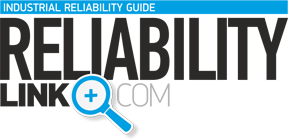Industrial Maintenance
Best Practice Lube and bearing maintenance Strategy for Improved Reliability
Improved Equipment Reliability
The basis of this paper comes from the experience gained working to implement reliability based maintenance strategies in a cardboard corrugating plant
Evaluation of many bearing failures in 2007 and 2008, revealed lubrication related issues to be the dominant cause of the need for replacement. i.e. Over 60% were lubrication related, i.e. wrong lube, contaminated lube, not enough or too much lube
The bearing is the rotating core of all machinery and when it fails the machine stops. The simple fact of increasing bearing life, will mean longer running machines and lower maintenance costs.
As lubrication accounts for the majority of bearing failures, this provides sufficient reasons for focusing attention on a better lubrication strategy.
It can also be stated that bearing and lubrication consumption can be an overall measurement of the effectiveness of reliability based implemented strategies. Detailed reliability improvements should have supporting KPI’s that measure, Up Time, Down Time, Overall Lube Cleanliness, Lube and Bearing Consumption, Maintenance Costs to Production Levels and Inventory levels.
- Overview – Lube Strategy for improved Reliability
A cardboard Corrugator Production Plant has both specialised and standard equipment that is used in its production processes, however the plant equipment is not large and not overly complex and these plants can be somewhat compared to many medium to small sized production facilities. This paper attempts to outline what a Corrugator Plant (or any small or medium sized plant) needs to do to improve equipment operational reliability, which will result in lower maintenance costs, maximized production levels and the best utilization of all staff (production and maintenance).The basis of this information comes from the experiences gained working to implement reliability based maintenance strategies in such a plant in the Netherlands.Evaluation of many bearing failures or replacements in the plant in 2007 and 2008, revealed lubrication related issues to be the dominant cause of the need for replacement.The cause can be summarized as follows.
Over 60% were lubrication related.
i.e. wrong lube, contaminated lube, not enough or too much lube.15% were poor maintenance related.
i.e. incorrect fitting or adjustment, damage from fitting.5% were ignorance related.
i.e. wrong clearances, wrong types or wrong seals.15% were in good condition and not needed to be changed.
i.e. if it ain’t broke don’t fix it.These statistics (Results found) are very similar to industry standards as published by SKF.
- The Bearing is the Machine Heart.
The bearing is the rotating core of all machinery and when it fails the machine stops or malfunctions. The simple fact of increasing bearing life, will mean longer running machines and lower maintenance costs.As lubrication accounts for the majority of bearing failures (replacements), this provides sufficient reasons for focusing attention on a better lubrication strategy, if the desire is to improve equipment reliability.Additionally, to support improved lubrication effectiveness, a fault detection process is necessary to minimize unscheduled downtime, due to rotational equipment failure enabling planned shuts for damaged component replacements.
- OVERALL KPI’s.
It can also be stated that bearing and lubrication consumption can be an overall measurement of the effectiveness of reliability based implemented strategies. However, detailed reliability improvements, should have supporting KPI’s that measure, Up Time, Down Time, Overall Lube Cleanliness, Lube and Bearing Consumption, Maintenance Costs to Production Levels and Inventory levels.
- What is a Good Reliability Strategy?
From the results found working inside this plant, coupled with the writers Reliability and Predictive maintenance experience / knowledge, the following key points define, “What is a Best Practice” Reliability based Maintenance Strategy to suit a Corrugator or Small to Medium Sized Production Plant, that when implemented will reduce bearing failures. These are:
4.1 To focus all Reliability efforts on core or important equipment. (this is defined as equipment when not operating, stops board production) Whilst improvements can be made to all equipment in the plant, (critical and non critical) the cots for doing this sometimes outweighs the benefits one gets from the production benefits.
4.2 Lubrication identification or tagging on plant equipment and on lubrication containers and devices, to reduce mixing. i.e. ensuring the right lube gets into the right machine. In most cases the lubricator knows what lube goes into what pieces of equipment, however problems occur other maintenance staff are faced with lubing an application. Additionally, plants that are producing products that may come into contact with food, by regulation are required to have a good lubrication labeling system.
4.3 Lubrication activity management to ensure that no point goes without lubrication. This goes for both oils and greases. Such a system takes the guess work out of equipment lubrication activities. Computerized lubrication management programmes ensure that the right amount of lube gets into the right equipment at the right time.
4.4 A process to check and refine the correct type of lube (specification, amount and frequency) used in each of the machine positions. Many plant lube schedules or activities are often the results of historic based activities which can also be influenced by past guess work, beliefs and feelings. Putting some academic thought behind the lubrication activities eliminates all errors.
4.5 Setting of an oil cleanliness standard that will lower the overall plant contamination levels to reduce component wear in hydraulic systems and gearboxes. The ISO 4406 standard for Oil Cleanliness is an excellent guide for understanding the effect reduced contamination levels will have on equipment reliability. A standard can be set for both Hydraulics systems and gearboxes and processes put in place to maintain the average contamination levels.
4.6 A clean and structured lube storage and dispensing area to ensure new oil deployed is clean, to protect the environment and bring prominence to the activity. Lube rooms are often a messy area and this is a source for contaminants entering the lube and such a room does nothing to create pride in the lubrication activity.
4.7 A structured oil filtration program to maintain the cleanliness standard and reduce component wear. Hydraulic oils are often filtered down as low as 3microns where gearbox oils are filtered using 6 to 10 micron filters.
4.8 Responsible staff that are also trained in a good understanding of lubrication, oil analysis and effective bearing maintenance. Equipment reliability improvements require maintenance staff to think and act differently. Traditional maintenance techniques require staff just to just fix things (this can be very structured resulting from predictive maintenance activities or the result of a breakdown) where as the new thinking requires maintenance staff to be motivated to find the Root Cause of the problem they are fixing. Training or up skilling in the areas of Lubrication, Oil Analysis and Bearing maintenance, Alignment and RCFA (Root Cause Failure Analysis) will encourage maintenance staff to take their activities to a much higher level.The activities we have experienced in improving the reliability in this plant show the need to establish a certified maintenance technician program. This means the training / up skilling of existing maintenance staff with reliability based maintenance technologies as briefly indicated above.
4.9 A vibration measurement process that can trend machine condition and provide operators and maintenance staff with machine health information, to drive the maintenance activities. More information is discussed in “Using Vibration Technologies.”
- Operators trained to be the first line of maintenance defense, handling equipment lubrication, cleaning and machine part inspections. (i.e. TPM). Our experience is that knowledgeable / experienced operators have a very good understanding of their machine operating characteristics and have a degree of passion for their machine. Many have the ability to be trained to assume basic maintenance responsibilities for their machines, TPM provides the avenue by which to grow maintenance staff into a basic maintenance care function. The Certified Maintenance Technician program discussed in point 4.8 can also be adapted to suit the experienced production staff. This could be referred to as a Certified Production Technician Program.
- Using Vibration technologies
Corrugating plants and many medium to small sized production plants often have specialised equipment with operating conditions that make it extremely difficult to use traditional vibration monitoring systems and equipment. The reasons being:- 1. Varying operating speeds and loads, make trending of similar parameters difficult.
- 2. Dominance of equipment operating a low speeds, thereby generating low, no or distorted sensor signal outputs.
- 3. Equipment resonance bands masking and confusing defect signals. These resonances vary according to paper thickness, speed, glue gap, and roll pressures.
- 4. Condensate removal conditions generating high vibration readings.
- What is a Good Condition Monitoring System?
A “Best Practice” Condition Monitoring system (for example to suit a Corrugator plant), that will provide equipment health information to drive maintenance, consists of a number of components. These are:- 1. Hardwired machine parts to bring sensor signals to the outside of the machine in order to reduce dangerous situations for staff to be in.
- 2. On line and / or off line systems to see condition situations and trends. With a dominance of trending.
- 3. Condition reports than can be understood and interpreted by staff who are not vibration specialists.
- 4. On or off site diagnostic support to help interpret true and actual bearing condition. Such support need to be from a diagnostic specialist with specific experiences in Corrugator equipment operating characteristics.
- Conclusions
Adapting the summarized points above to maintenance and equipment care strategies for medium to small plants will have the effect of lowering bearing and lubrication consumption. This in turn will make the plant much more reliable, productive and offer the best results of maintenance and production costs to production levels.
By Ian Knight – Enluse BV, Heusing 1, 4817 ZB, Breda, The Netherlands, ian.knight@enluse.com
Tagged bearings, Ian Knight, Improvements, lubrication, Reliability



Pingback: Custom packaging boxes supplier in china
Pingback: lowongan bumn 2017
Pingback: GVK Biosciences